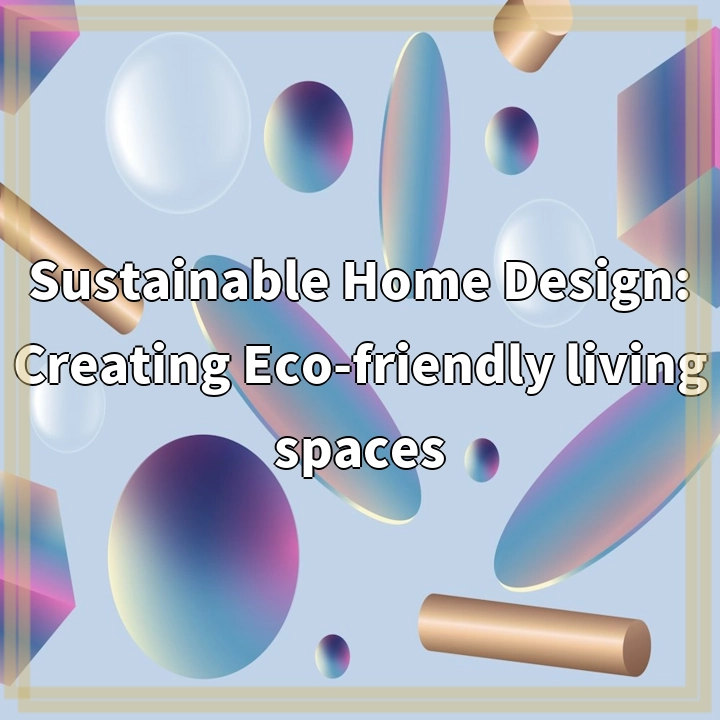
What is Sustainable Home Design?
Sustainable home design, also known as eco-friendly or green home design, is an approach to constructing and renovating homes that prioritize reducing environmental impact while maximizing the use of renewable resources and energy efficiency. It encompasses various aspects of architecture, construction, materials, and energy systems to create living spaces that are in harmony with the environment and promote a healthy and sustainable lifestyle.
Real-World Problems Associated with Sustainable Home Design
While sustainable home design offers numerous advantages, there are also real-world challenges that need to be addressed. These challenges include:
1. Cost
One of the main hurdles to widespread adoption of sustainable home design is the initial cost. Green building materials and energy-efficient systems can sometimes be more expensive than traditional alternatives. However, it is important to consider the long-term benefits such as reduced energy bills, improved indoor air quality, and potential tax incentives that can offset the initial investment.
2. Limited Availability and Accessibility
Another challenge is the limited availability and accessibility of sustainable building materials and technologies. In some regions, it can be difficult to find local suppliers or contractors experienced in eco-friendly construction practices. This lack of accessibility can make it harder for homeowners to incorporate sustainable elements into their homes.
3. Lack of Awareness and Education
Many homeowners may not be aware of the benefits of sustainable home design or the options available to them. The lack of awareness and education about eco-friendly practices can hinder the demand for sustainable homes and slow down the progress towards a more sustainable future.
4. Resistance to Change
Resistance to change is another real-world problem associated with sustainable home design. Some homeowners and builders may be resistant to adopting new technologies or design practices due to a lack of familiarity or skepticism about their effectiveness. Overcoming this resistance requires promoting awareness, showcasing successful case studies, and highlighting the long-term benefits of sustainable design.
5. Regulations and Standards
Different regions may have varying regulations and standards for sustainable construction, which can create complexities and challenges for homeowners and builders. It is important to stay informed about local codes and regulations to ensure compliance while striving for sustainable design.
Conclusion
While sustainable home design offers numerous benefits for the environment and homeowners, it also comes with real-world challenges. By addressing these challenges through education, availability of resources, and policy changes, we can promote wider adoption of sustainable home design and create a more sustainable and eco-friendly future.

Solutions to Real-World Problems in Sustainable Home Design
Addressing the challenges associated with sustainable home design requires proactive solutions. Here are some strategies to overcome these hurdles and promote the widespread adoption of eco-friendly living spaces:
1. Cost-Effective Alternatives
Developing cost-effective eco-friendly materials and technologies can help reduce the initial expenses associated with sustainable home design. Research and innovation in this area can lead to more affordable options for homeowners, making sustainability more accessible to a wider audience.
2. Accessibility and Awareness
Increasing accessibility to sustainable building materials and promoting awareness about their benefits are essential. This can be achieved through educational initiatives, resource centers, and collaborations with local suppliers and contractors. Creating platforms for knowledge-sharing and showcasing successful examples can inspire others to adopt sustainable practices.
3. Education and Training
Providing education and training programs for homeowners and builders can help bridge the knowledge gap. Workshops, certification courses, and online resources can empower individuals with the necessary skills and understanding of sustainable design principles, encouraging them to incorporate these practices into their projects.
4. Incentives and Policy Support
Governments and organizations can play a vital role in promoting sustainable home design by offering incentives and policy support. This can include tax credits, grants, and streamlined permitting processes specifically tailored to incentivize sustainable construction and renovation projects.
5. Collaboration and Research
Encouraging collaboration between architects, builders, researchers, and policymakers is crucial to drive innovation and address challenges in sustainable home design. Investing in research and development to improve construction techniques, materials, and energy systems can lead to breakthroughs in cost-effectiveness and overall sustainability.
Conclusion
By implementing these solutions, we can overcome the real-world problems associated with sustainable home design and create a future where eco-friendly living spaces are the norm. Together, we can build a more sustainable world that benefits the environment and enhances the quality of life for all.















